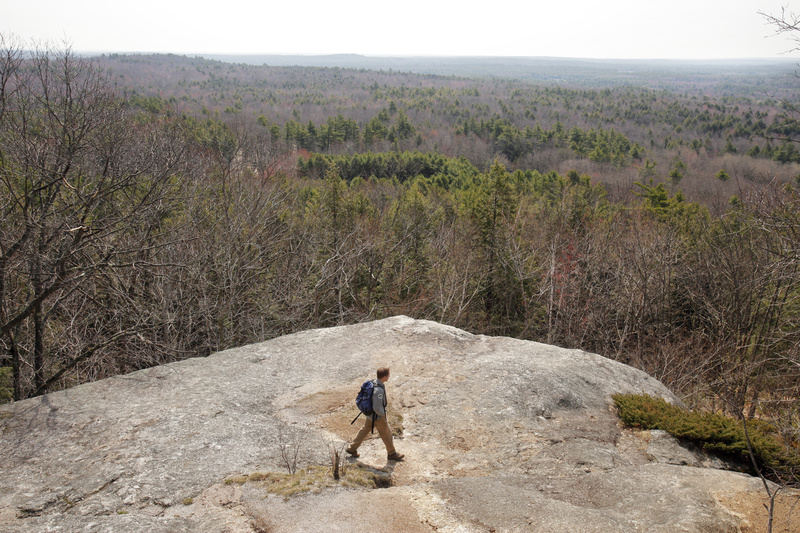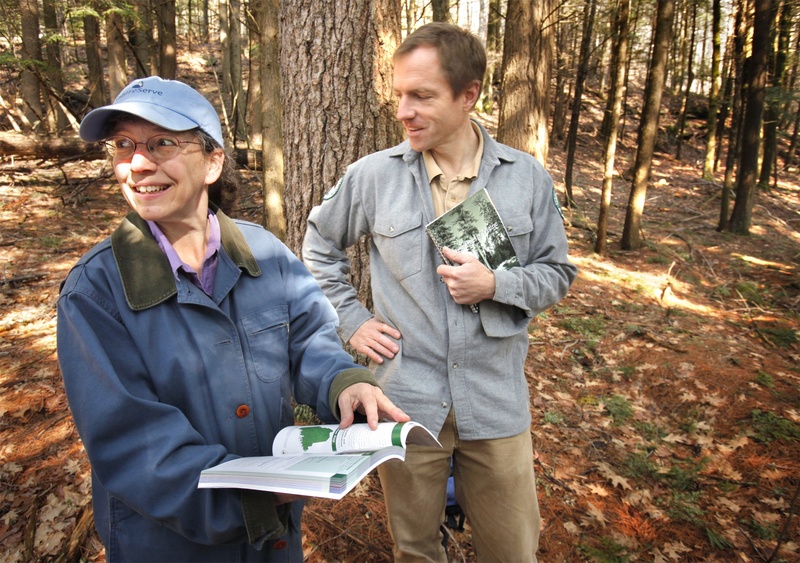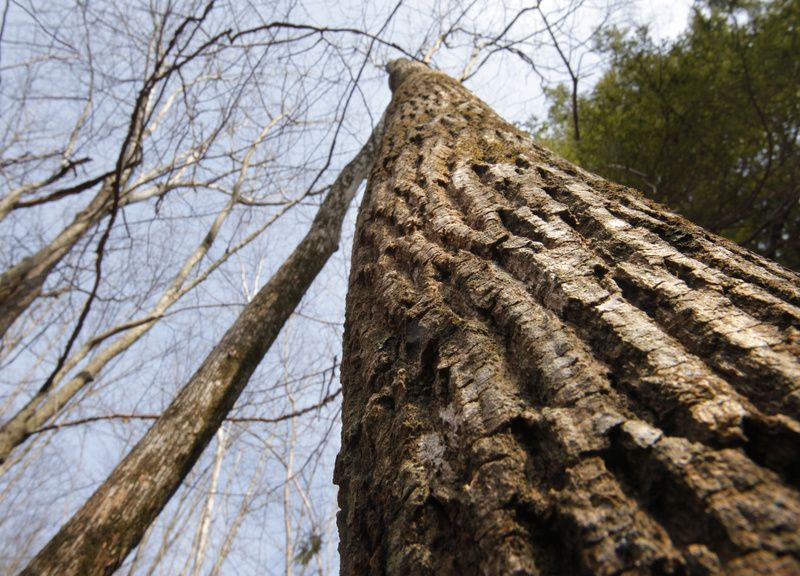POWNAL — Canada mayflowers poked up through the leaf debris and a few rays of sun managed to ripple through a dense canopy of fir trees as state ecologist Andrew Cutko made his way up Bradbury Mountain.
This is a classic hemlock forest, announced Cutko, an ecologist with the Maine Natural Areas Program, as he pointed out patches of dicranum moss and a general lack of undergrowth.
“It’s an east-facing slope that doesn’t get a lot of warm sun,” Cutko said.
Hemlock forests are one of 104 distinct natural communities that occur across the state. The communities are identified by Cutko and Susan Gawler, a former state ecologist who now works for the conservation organization NatureServe, in a new guidebook, “Natural Landscapes of Maine: A Guide to Natural Communities and Ecosystems,” which tells readers where and how to find them.
Gawler said the book originally targeted conservation land managers and others who need to protect an entire ecosystem, but she and Cutko realized anyone with an interest in nature would be interested in identifying the state’s varied natural communities.
“Maine is a special place and people with a general appreciation of those places want to put names to them,” said Cutko.
More than a decade in the making, the guide was produced with grants from a half dozen public and private organizations such as the U.S. Environmental Protection Agency, the Nature Conservancy, the Sweet Water Trust and Maine Outdoor Heritage Fund. The book draws on the work of dozens of Maine ecologists and naturalists.
Natural communities are distinct assemblages of animals and plants interacting in a common environment. They include cedar bogs, cattail marshes and subalpine meadows.
The guide describes each community, lists its characteristic flora and fauna, where it occurs across the state and where to find it at state parks and other public lands.
People interested in visiting a pitch pine scrub oak barren, which can only be found in the southern tip of the state, should head to the Kennebunk Plains Preserve to find the long list of rare flora and fauna, such as the northern blazing star and whippoorwills. Those in the mood for a maritime slope bog and its baked-apple berry, which tastes like it sounds, should head to Great Wass Island Preserve in Beals.
On Wednesday the two ecologists pointed out four different habitats on the walk up Bradbury Mountain in Pownal. Normally habitats span large areas, but they can also be found in small patches.
Heading farther up slope from the hemlock forest, Cutko and Gawler passed through an ironwood oak ash woodland, characterized by Christmas ferns and shaggy-barked hornbeam trees, then an oak pine woodland, a good place to find lowbush blueberries. They finally emerged at a low-elevation bald, which is associated with a lot of bare rock found at the top of Bradbury Mountain.
Gawler and Cutko, who have seen about every inch of the state, have their own favorite Maine habitats. Gawler favors the St. John River, and its river shore shrub thickets and riverside seeps.“It’s unlike any other river in Maine,” she said.
Cutko said he favors northern Maine’s Deboullie Ponds Public Lands, home to such natural communities as northern hardwoods forests and circumneutral outcrops.
“It’s so remote,” he said.
Staff Writer Beth Quimby can be contacted at 791-6363 or at:
bquimby@pressherald.com
Send questions/comments to the editors.






Success. Please wait for the page to reload. If the page does not reload within 5 seconds, please refresh the page.
Enter your email and password to access comments.
Hi, to comment on stories you must . This profile is in addition to your subscription and website login.
Already have a commenting profile? .
Invalid username/password.
Please check your email to confirm and complete your registration.
Only subscribers are eligible to post comments. Please subscribe or login first for digital access. Here’s why.
Use the form below to reset your password. When you've submitted your account email, we will send an email with a reset code.